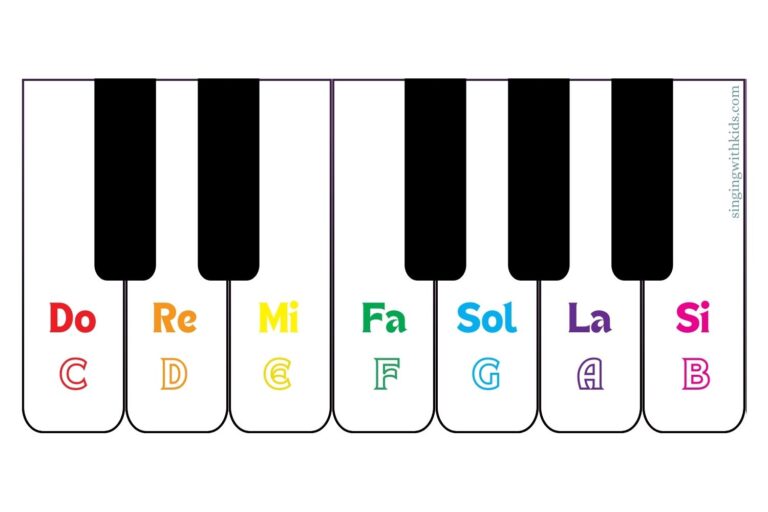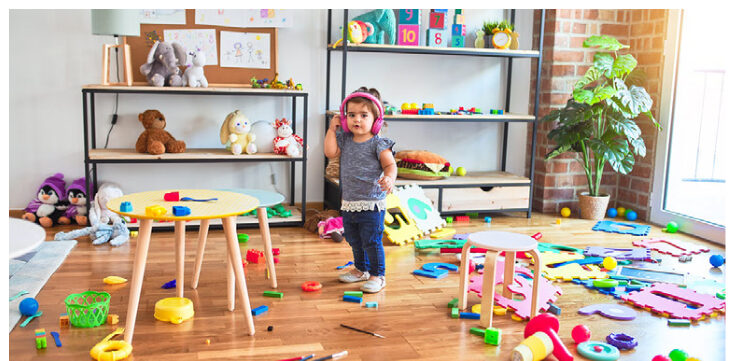Teaching Your Kids to Sing: Fun Christmas Activities
Hello dear friends!
The holiday season is even more magical when it’s filled with the joyful sounds of children singing their favorite Christmas songs. There’s something truly special about little voices joining together in melody, bringing warmth and cheer to every corner of the home.
But did you know that singing isn’t just fun—it’s also incredibly beneficial for your kids? Through festive singing activities, you can help your children develop their musical abilities, boost their confidence, and create lasting family memories.
So, grab a cup of hot cocoa, and let’s explore some delightful ways to teach your kids to sing this Christmas!

Table of Contents
1. Warm-Up with Festive Tunes
Using Popular Christmas Songs as Vocal Warm-Ups
Before jumping into full songs, it’s helpful to start with some simple vocal warm-ups. And what better way than using familiar Christmas melodies?
🎶 The “Jingle Bells” Scale Exercise
- Activity: Take the opening phrase of “Jingle Bells” and have your child sing it at different pitches, moving up and down like steps on a ladder.
- Explanation: This introduces the concept of musical scales—think of them as ladders where each rung is a different note. It also helps kids understand pitch, which is just a fancy word for how high or low a sound is.
Imagine climbing up to place the star on top of the Christmas tree and then sliding back down!
Why It’s Helpful
- Vocal Warm-Ups for Kids: Warming up the voice helps prevent strain and gets those vocal cords ready for singing.
- Singing Exercises for Children: Makes learning about music fun and engaging.
2. Mastering Smooth Singing with Slow Melodies
Improving Breath Control with Slow Christmas Songs
Slow, gentle carols are perfect for teaching kids about smooth, connected singing.
🎶 Gliding Through “Silent Night”
Think of it as gently gliding across an ice rink or smoothly wrapping a present without any wrinkles.
Benefits
- Breath Control Exercises: Helps your child learn to manage their breath while singing, which is essential for holding notes and singing longer phrases.
- Slow Christmas Songs: Perfect for practicing this technique because their relaxed pace gives your child time to focus on their breathing and smoothness.
When my daughter first tried this, she said, “Mom, it’s like I’m a swan swimming across a calm lake!” That imagery helped her connect with the idea of smooth, flowing movement, and her singing became beautifully legato in no time.
3. Energizing Practice with Jolly Tunes
Enhancing Rhythm and Clarity with Upbeat Carols
Fast-paced, cheerful songs are great for practicing quick, crisp singing and clear pronunciation.
🎶 Bouncing Along with “Up on the Housetop”
- Activity: Sing a lively Christmas song, focusing on making each note short and snappy.
- Explanation: This is called “staccato” singing. Imagine each note is like a tiny jump or a dot—short and detached from the others. Emphasize keeping up with the tempo (the speed of the music) while pronouncing all the words clearly.
Pretend you’re an excited reindeer hopping from rooftop to rooftop, bringing joy to every home!
Why It’s Important
- Staccato Singing: Helps with articulation and precision in music.
- Rhythm Exercises for Kids: Improves their ability to keep time with the music, an essential skill in any musical activity.
- Upbeat Christmas Songs: These tunes naturally lend themselves to energetic practice, making the learning process fun.

5. Fun Rhythm and Rhyme Games
Learning Rhythm Patterns and Song Structures
Understanding rhythm and song structure is essential for budding singers, and what better way to learn than through interactive games?
🎶 Clap and Guess the Christmas Song
- Activity: Clap the rhythm of a well-known Christmas song and have your child guess which one it is.
- How to Play:
- Start by clapping the beat of a favorite carol without singing or humming.
- Encourage your child to listen carefully and guess the song.
- Switch roles and let your child clap while you guess.
Turn it into a friendly competition to see who can guess the most songs!
Why It’s Helpful
- Rhythm Games for Children: Helps develop a strong sense of timing and beat.
- Enhances Listening Skills: Encourages attentive listening and concentration.
- Interactive and Fun: Makes learning engaging and playful.
🎶 Exploring Rhymes and Repeats
- Activity: Identify rhyming words in Christmas songs and notice how the chorus repeats.
- How to Do It:
- Pick a favorite carol and read the lyrics together (you can find them in a family-friendly songbook).
- Highlight the rhyming words and discuss how they create a pleasing sound.
- Point out the chorus and talk about how it repeats throughout the song.
Benefits
- Rhyming Activities: Enhances language skills and phonemic awareness.
- Understanding Song Structure for Kids: Introduces concepts like verses and choruses in a simple way.
Interactive Element
- Create your own rhymes by choosing new words that fit the melody.
- Make up silly or festive lines—the goal is to have fun and be creative!
6. Exploring Musicality and Emotions
Understanding How Music Expresses Feelings
Music is a powerful way to convey emotions, and teaching kids about this can deepen their appreciation for singing.
🎶 Happy or Thoughtful? Exploring Major and Minor Keys
- Activity: Listen to Christmas songs in major keys (which often sound happy and uplifting) and those in minor keys (which can feel more reflective or even a bit somber).
- How to Do It:
- Play a Cheerful Carol in a Major Key:
- Examples:
- “Jingle Bells”: A bright and joyful tune that instantly brings smiles.
- “Deck the Halls”: An energetic song full of festive cheer.
- “Joy to the World”: A triumphant and uplifting melody.
- Discussion:
- Ask your child how the song makes them feel.
- Do they feel happy, excited, or like they want to dance?
- Encourage them to describe the emotions in their own words.
- Examples:
- Play a Reflective Song in a Minor Key:
- Examples:
- “God Rest Ye Merry, Gentlemen”: A traditional carol with a mysterious and haunting melody.
- “What Child Is This?”: A gentle and contemplative song that evokes wonder.
- “Carol of the Bells”: An intense and dramatic tune with a captivating rhythm.
- Discussion:
- Ask how these songs make them feel differently from the earlier ones.
- Do they feel calm, curious, or thoughtful?
- Talk about any images or stories the music brings to mind.
- Examples:
- Explain the Difference:
- Simplify the Concept:
- Major Key: Like bright, sunny colors—think yellows and oranges—that make us feel happy and energetic.
- Minor Key: Like cool, moonlit colors—blues and purples—that can make us feel calm or introspective.
- Relate to Emotions:
- Explain that composers use major and minor keys to express different feelings through music.
- Encourage your child to think about how changing the key can change the mood of a song.
- Simplify the Concept:
- Play a Cheerful Carol in a Major Key:
Why It’s Helpful
- Musicality for Kids: Helps them understand that music isn’t just about singing the right notes—it’s also about expressing and feeling emotions.
- Expressing Emotions Through Music: Encourages emotional intelligence by recognizing and articulating how different types of music make them feel.
- Major and Minor in Music: Introduces basic music theory in an accessible and engaging way, laying the foundation for future musical learning.
I remember when my son first heard “Carol of the Bells.” He closed his eyes and said, “It sounds like magical bells ringing in a snowy forest.” It was amazing to see how the minor key sparked his imagination, painting vivid pictures in his mind. Moments like these show how music can touch our hearts and open up a world of emotions.
🎶 Acting Out the Emotions
- Activity: Encourage your child to act out emotions while singing to enhance expression.
- How to Do It:
- Choose a song and identify the emotions it conveys (joy, excitement, calmness).
- While singing, use facial expressions and gestures that match these feelings.
- Make it a game by guessing each other’s emotions based on the performance.
I recall a time when my daughter and I sang a gentle carol together. She closed her eyes and swayed to the melody, truly feeling the song. It was a beautiful moment that showed me how music helps children express emotions they might not have words for.

7. Additional Fun and Engaging Exercises
More Ways to Make Singing Fun This Christmas
Let’s add more joy to your singing sessions with creative activities the whole family can enjoy.
🎶 Create Your Own Carol
- Activity: Write new lyrics to a familiar Christmas tune.
- How to Do It:
- Pick a simple melody everyone knows.
- Come up with new words—maybe about your family, pets, or a funny holiday mishap.
- Don’t worry about rhyming perfectly; the sillier, the better!
Laugh together at the quirky lyrics and enjoy the creative process.
Benefits
- Family Singing Activities: Strengthens family bonds through collaboration.
- Creative Singing Exercises: Sparks imagination and creativity.
- Fun Christmas Games: Adds a unique twist to your holiday traditions.
🎶 Musical Freeze Dance
- Activity: Play “Musical Freeze Dance” with Christmas songs.
- How to Play:
- Play festive music and dance around together.
- When the music stops unexpectedly, everyone must freeze in place.
- Add a twist by making funny poses or expressions when you freeze.
Why It’s Fun
- Encourages Active Listening: Kids have to pay attention to the music to know when to freeze.
- Promotes Physical Activity: Gets everyone moving and grooving.
- Gentle Humor: Creates hilarious moments that lead to shared laughter.

8. Tips for Parents Without Musical Background
Encouraging Your Child’s Singing Journey
You might be thinking, “I’m not a singer—how can I teach my child to sing?” Don’t worry! You don’t need to be a professional to enjoy the wonders of music with your kids.
Advice
- Embrace the Joy: Focus on the fun and connection rather than technical perfection.
- Learn Together: It’s okay to learn alongside your child. This can make the experience even more rewarding.
- Be Supportive: Encourage their efforts and celebrate progress, no matter how small.
These games and exercises are just suggestions. The key is to sing, experiment, and learn from your favorite Christmas songs while having fun.
Resources
- Online Videos: Platforms like YouTube have plenty of kid-friendly singing tutorials.
- Apps: Consider using apps designed for children’s music education, which offer interactive lessons.
- Songbooks: A family sing-along book can provide lyrics and ideas for new songs to try.
I met a fellow parent who confessed that she couldn’t carry a tune but wanted to support her son’s interest in singing. They started exploring music apps together, turning practice into a daily game. Not only did her son improve, but she found herself humming along confidently. They even performed a duet at a family gathering, much to everyone’s delight!
Keep the Melody Going!
I hope these activities inspire you to fill your home with music and laughter this holiday season. Remember, the goal isn’t to hit every note perfectly but to create cherished memories and nurture a love for music in your children.
Do you have any favorite singing games or special musical moments with your family? I’d love to hear about them!
Feel free to share this post with friends and family looking to add a melodic touch to their Christmas celebrations.
Wishing you a festive season filled with harmony and joy!







